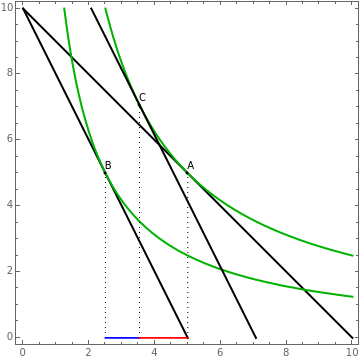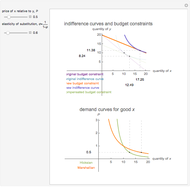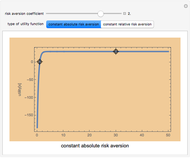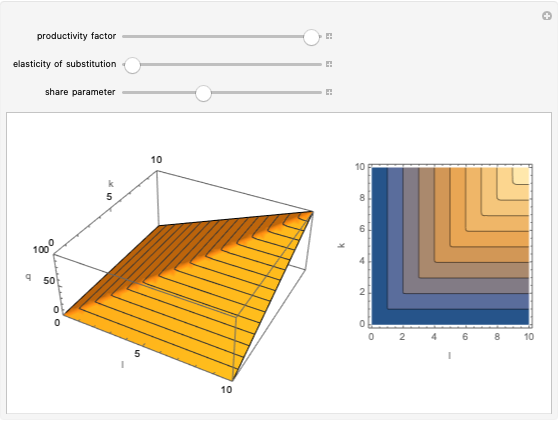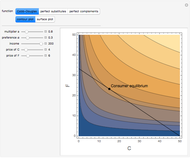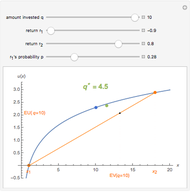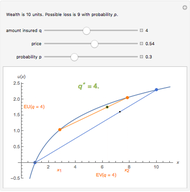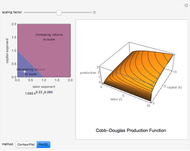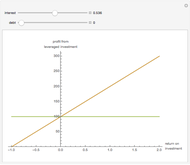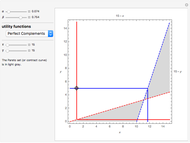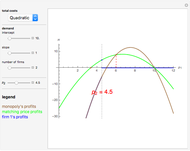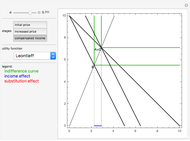Income and Substitution Effects with Different Utility Functions

Requires a Wolfram Notebook System
Interact on desktop, mobile and cloud with the free Wolfram Player or other Wolfram Language products.
This Demonstration shows the income and substitution effects for the commodity on the horizontal axis as its unit price increases for a variety of utility functions. These range from standard textbook Cobb-Douglas, Leontieff (perfect complements), and linear (perfect substitutes) to constant elasticity of substitution (CES) utility functions, and utility functions having a satiation point or generating a Giffen demand.
[more]
Contributed by: Massimiliano Landi (August 2011)
Open content licensed under CC BY-NC-SA
Snapshots
Details
Beside utility functions that are seen in undergraduate microeconomics courses, some other utility functions, generating a Giffen demand, are also shown so as to visualize the difference in sign and magnitudes of income and substitution effects. You can select the utility functions from the menu; initially a utility is randomly chosen. The utility functions are:
Cobb–Douglas: 
Leontieff (perfect complements): 
Linear (perfect substitutes): 
Bliss point: 
Giffen goods (1): 
Giffen goods (2): 
Constant elasticity of substitution (CES): 
Giffen goods (1) is characterized by a zero substitution effect [1] whereas Giffen goods (2) has a negative substitution effect that nevertheless is counterbalanced by a positive income effect [2].
References
[1] P. N. Sørensen, "Simple Utility Functions with Giffen Demand," Economic Theory, 31, 2007 pp. 367–370.
[2] M. Landi, "Single Peakedness and Giffen Demand," MIMEO, Singapore Management University, 2011.
Permanent Citation
